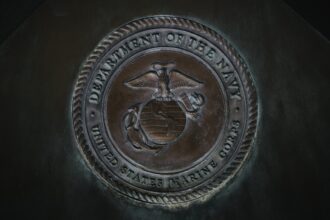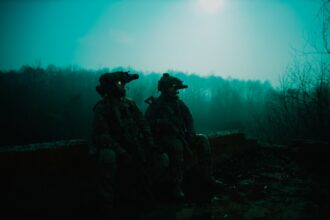Historical accuracy serves as the bedrock of any documentary that seeks to explore the past. It is not merely a matter of presenting facts; it is about weaving a narrative that honors the truth of events and the experiences of individuals involved. When filmmakers prioritize accuracy, they contribute to a broader understanding of history, allowing audiences to engage with the past in a meaningful way.
Misrepresentation or distortion of historical facts can lead to misconceptions, perpetuating myths that may influence public perception and understanding for generations. Therefore, the responsibility of ensuring accuracy lies heavily on the shoulders of those who create historical documentaries. Moreover, historical accuracy fosters credibility.
In an age where misinformation can spread rapidly, documentaries that adhere to rigorous standards of accuracy can serve as vital resources for education and enlightenment. By presenting a truthful account of events, filmmakers not only honor the legacy of those who lived through them but also empower viewers to draw informed conclusions about contemporary issues that echo historical themes.
Key Takeaways
- Historical accuracy is crucial for maintaining credibility and trust with the audience.
- Primary sources such as documents, letters, and artifacts are essential for authentic historical research.
- Identifying key events and figures helps in creating a coherent and engaging narrative structure.
- Interviews with experts and eyewitnesses add depth and authenticity to the documentary.
- Archival footage, photographs, reenactments, and visualizations bring historical events to life for the audience.
Researching and gathering primary sources
The foundation of any historical documentary is built upon thorough research and the gathering of primary sources. Primary sources, such as letters, diaries, photographs, and official documents, provide firsthand accounts that are invaluable for understanding the context and nuances of historical events. Filmmakers must delve into archives, libraries, and museums to unearth these materials, often spending countless hours sifting through records to find the gems that will bring their narrative to life.
This meticulous process not only enriches the documentary but also ensures that it is grounded in authentic experiences. In addition to traditional archives, modern technology has opened new avenues for accessing primary sources. Digital archives and online databases have made it easier for filmmakers to locate rare documents and artifacts from around the world.
However, while technology can facilitate research, it is essential for filmmakers to critically evaluate the sources they encounter. Understanding the provenance and context of each source is crucial in determining its reliability and relevance. By combining traditional research methods with digital tools, filmmakers can create a robust foundation for their narratives, ensuring that they are both accurate and engaging.
Identifying key historical events and figures
Identifying key historical events and figures is a critical step in shaping the narrative of a documentary. Filmmakers must discern which moments in history are most significant to their story and how these events interconnect with broader themes. This process often involves extensive discussions with historians and scholars who can provide insights into which events have had lasting impacts on society.
By focusing on pivotal moments, filmmakers can create a narrative arc that resonates with audiences, drawing them into the complexities of history. Furthermore, the selection of historical figures plays a vital role in humanizing the narrative. By highlighting individuals who played crucial roles in these events, filmmakers can illustrate the personal stakes involved in historical developments.
This approach not only adds depth to the documentary but also allows viewers to connect emotionally with the story being told. The challenge lies in balancing well-known figures with lesser-known individuals whose contributions may have been overlooked. By doing so, filmmakers can present a more nuanced view of history that reflects its multifaceted nature.
Creating a compelling narrative structure
| Aspect | Metrics |
|---|---|
| Engagement | Average time spent on content |
| Effectiveness | Conversion rate |
| Impact | Number of shares on social media |
| Relevance | Percentage of returning visitors |
A compelling narrative structure is essential for engaging viewers and guiding them through the complexities of history. Filmmakers must carefully consider how to present their material in a way that captivates audiences while remaining true to the facts. This often involves crafting a storyline that includes elements such as conflict, resolution, and character development.
By employing techniques commonly found in storytelling—such as foreshadowing, suspense, and emotional arcs—filmmakers can transform historical events into a gripping narrative that holds viewers’ attention. Additionally, the use of thematic organization can enhance the documentary’s impact. Rather than simply presenting events chronologically, filmmakers might choose to group segments by themes or motifs that resonate throughout history.
This approach allows for deeper exploration of concepts such as power dynamics, social change, or cultural identity. By weaving these themes into the narrative structure, filmmakers can create a rich tapestry that not only informs but also inspires reflection on how history continues to shape contemporary society.
Incorporating interviews with experts and eyewitnesses
Incorporating interviews with experts and eyewitnesses adds a vital layer of authenticity to historical documentaries. Experts—such as historians, archaeologists, or cultural critics—provide context and analysis that enriches the viewer’s understanding of events. Their insights can illuminate complex issues and offer interpretations that may not be immediately apparent from primary sources alone.
By including these voices, filmmakers can create a dialogue between past and present, allowing audiences to engage with history on a deeper level. Eyewitness accounts are equally important, as they bring personal experiences into the narrative. Hearing directly from individuals who lived through significant events can evoke powerful emotions and foster empathy among viewers.
These interviews often reveal the human side of history—stories of resilience, struggle, and triumph that statistics alone cannot convey. Filmmakers must approach these interviews with sensitivity and respect, ensuring that they honor the experiences shared while also integrating them seamlessly into the overall narrative.
Utilizing archival footage and photographs
Archival footage and photographs serve as powerful visual tools in historical documentaries, providing viewers with a tangible connection to the past. These materials can evoke emotions and create a sense of immediacy that enhances storytelling. When filmmakers incorporate archival footage, they allow audiences to witness history as it unfolded, making events feel more real and relatable.
The juxtaposition of past images with contemporary narratives can also highlight changes over time, prompting viewers to reflect on progress or regression in various aspects of society. However, the use of archival materials requires careful consideration regarding their context and presentation. Filmmakers must ensure that they accurately represent the time period and circumstances surrounding each piece of footage or photograph.
Additionally, ethical considerations come into play when using sensitive materials—particularly those depicting trauma or suffering. By approaching archival content thoughtfully and respectfully, filmmakers can create a compelling visual narrative that honors the past while engaging modern audiences.
Incorporating reenactments and visualizations
Reenactments and visualizations can serve as effective storytelling devices in historical documentaries when used judiciously. These techniques allow filmmakers to recreate significant moments in history, providing viewers with a vivid representation of events that may not have been captured on film or through photographs. Reenactments can help bridge gaps in historical records by illustrating scenarios based on thorough research and expert consultation.
When executed well, they can enhance understanding by placing viewers in the midst of pivotal moments.
It is crucial to maintain a clear distinction between dramatization and factual representation; audiences should be aware when they are viewing a reenactment rather than actual historical footage.
Transparency about creative choices helps preserve credibility while allowing for artistic expression. Additionally, filmmakers should strive for authenticity in casting and production design to ensure that reenactments resonate with viewers as genuine representations of history.
Balancing entertainment value with educational content
Striking a balance between entertainment value and educational content is one of the most significant challenges faced by creators of historical documentaries. While engaging storytelling is essential for capturing audience interest, it should not come at the expense of factual integrity or depth of analysis. Filmmakers must find ways to present information in an accessible manner without oversimplifying complex issues or glossing over important details.
One effective strategy is to incorporate storytelling techniques that draw viewers in while still providing substantial educational content. For instance, using personal narratives or emotional arcs can make historical events more relatable without sacrificing accuracy or depth. Additionally, integrating interactive elements—such as viewer polls or discussion prompts—can encourage audience engagement while reinforcing educational objectives.
By prioritizing both entertainment and education, filmmakers can create documentaries that resonate with diverse audiences while fostering a deeper understanding of history.
Addressing ethical considerations in historical documentary making
Ethical considerations play a crucial role in the creation of historical documentaries. Filmmakers must navigate sensitive topics with care, particularly when dealing with issues such as trauma, violence, or injustice. It is essential to approach these subjects respectfully and thoughtfully, ensuring that narratives do not exploit suffering for sensationalism or entertainment value.
This requires a commitment to ethical storytelling practices that prioritize truthfulness while honoring the dignity of those whose stories are being told. Moreover, transparency is vital when addressing ethical considerations in documentary filmmaking. Filmmakers should be open about their research methods, sources, and creative choices to foster trust with their audience.
This transparency extends to acknowledging potential biases or limitations within their narratives—recognizing that history is often complex and multifaceted. By engaging with ethical considerations thoughtfully, filmmakers can create documentaries that not only inform but also contribute positively to public discourse around historical issues.
Ensuring diversity and inclusivity in historical representation
Diversity and inclusivity are essential components of accurate historical representation in documentaries. History is not monolithic; it encompasses a multitude of voices and perspectives that deserve recognition. Filmmakers must strive to include diverse narratives that reflect the experiences of various communities—particularly those that have been marginalized or overlooked in mainstream accounts.
By amplifying these voices, documentaries can provide a more comprehensive understanding of history while challenging dominant narratives. Incorporating diversity also involves being mindful of representation behind the camera. Collaborating with individuals from different backgrounds—whether they are historians, researchers, or production staff—can enrich the storytelling process by bringing varied perspectives into play.
This collaborative approach fosters an environment where multiple viewpoints are valued and integrated into the final product. Ultimately, ensuring diversity and inclusivity not only enhances the documentary’s authenticity but also resonates more deeply with audiences who seek representation in historical narratives.
Collaborating with historians and scholars for authenticity
Collaboration with historians and scholars is paramount for achieving authenticity in historical documentaries. These experts bring invaluable knowledge and insights that can elevate the quality of storytelling while ensuring factual accuracy. Filmmakers should actively seek out historians who specialize in relevant topics during both the research phase and throughout production.
Their expertise can guide decisions regarding which events to highlight, how to interpret primary sources, and what contextual information is necessary for viewers’ understanding. Furthermore, collaboration fosters an environment where filmmakers can engage critically with historical narratives rather than simply presenting them as static facts. Historians can challenge assumptions or offer alternative interpretations that enrich the documentary’s depth while encouraging viewers to think critically about history’s complexities.
By working closely with scholars throughout the filmmaking process, creators can produce documentaries that resonate authentically with audiences while contributing meaningfully to ongoing conversations about history’s relevance today. In conclusion, creating a successful historical documentary requires careful consideration across multiple dimensions—from ensuring accuracy to addressing ethical concerns and fostering inclusivity. By prioritizing research, collaboration with experts, and thoughtful storytelling techniques, filmmakers can craft narratives that not only educate but also inspire audiences to engage deeply with history’s lessons for contemporary society.
When delving into the intricate process of content planning for historical documentaries, it’s essential to consider various elements such as narrative structure, authenticity, and audience engagement. A related article that provides valuable insights into this topic can be found on “In the War Room,” a platform dedicated to exploring historical narratives and their modern-day implications. This article discusses the importance of meticulous research and the role of storytelling in bringing historical events to life. For more detailed information, you can read the full article by visiting In the War Room.
CHECK THIS OUT! 📽️🎞️ Hollywood’s Secret War: How the CIA Rewrote Movies
FAQs
What is content planning for historical documentaries?
Content planning for historical documentaries involves the process of researching, organizing, and outlining the content that will be included in the documentary. This includes determining the historical events, figures, and themes that will be covered, as well as the overall structure and narrative of the documentary.
Why is content planning important for historical documentaries?
Content planning is important for historical documentaries because it helps ensure that the documentary is well-researched, organized, and engaging for the audience. It allows the filmmakers to carefully consider the historical content that will be included and how it will be presented, resulting in a more informative and impactful documentary.
What are some key considerations in content planning for historical documentaries?
Some key considerations in content planning for historical documentaries include conducting thorough research, identifying primary and secondary sources, determining the narrative structure, considering the perspectives and voices that will be included, and ensuring historical accuracy and authenticity.
How do filmmakers approach content planning for historical documentaries?
Filmmakers approach content planning for historical documentaries by conducting extensive research, consulting with historians and experts, creating a detailed outline or script, and considering the visual and storytelling elements that will be used to bring the historical content to life on screen.
What are the challenges in content planning for historical documentaries?
Challenges in content planning for historical documentaries may include navigating complex historical events and perspectives, ensuring accuracy and authenticity, determining the most compelling narrative structure, and balancing the need for historical context with engaging storytelling.




